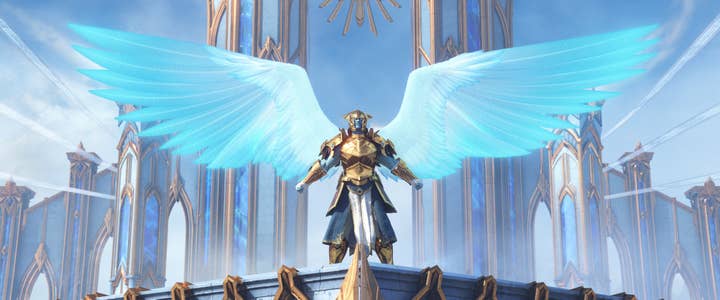As World of Warcraft enters the Shadowlands: "Why should it ever end?"
Executive producer John Hight and lead game designer Morgan Day share how the World of Warcraft team is still building on its MMORPG 16 years after launch
In four days, Blizzard Entertainment will launch World of Warcraft: Shadowlands -- the MMORPG's eighth expansion in 16 years.
Eight major expansions is no small feat. Neither is the fact that World of Warcraft is still a powerhouse so long after launch, remaining steady even as contenders like WildStar had their flash in the pan, and others such as The Elder Scrolls Online and Final Fantasy XIV manage to co-exist with, but not topple, Blizzard's creation.
But that has not left World of Warcraft without challenges, specifically many associated with the game's age. Speaking with GamesIndustry.biz, World of Warcraft executive producer John Hight and lead game designer Morgan Day are candid about the fact that the leveling experience specifically has needed an overhaul for sometime, saying that it wasn't exactly friendly to new players in its current state.
It's finally gotten that overhaul in Shadowlands, with a level squish bringing player levels back into a less daunting range and sweeping changes to how experience, leveling zones, and progression work so that players can tackle all of the game's content in almost any order. There's also a brand new tutorial zone specifically geared toward brand new players -- something the game never had before.
"Changing everyone's level and touching, essentially, every creature and spell that we've ever made in World of Warcraft is what was required to make this work"
Morgan Day
"There were a lot of challenges along the way," Day says. "As you can imagine, changing everyone's level and touching, essentially, every creature and spell that we've ever made in World of Warcraft is what was required to make this work, and it was a tremendous undertaking by the team. But so far, the community reaction has been really positive. We've been really excited to see the stories of people who are checking out World of Warcraft for the first time, and hear the feedback of how leveling from one to 50 feels so much more manageable now."
The leveling changes dropped a few weeks ago with a pre-patch even though Shadowlands proper doesn't launch until next week, and Hight says he's seen an increase in the number of brand new players coming into the game since. He adds that he saw a similar increase in new subscribers when World of Warcraft: Classic launched last year, indicating that interest in the original version of World of Warcraft transcends nostalgia.
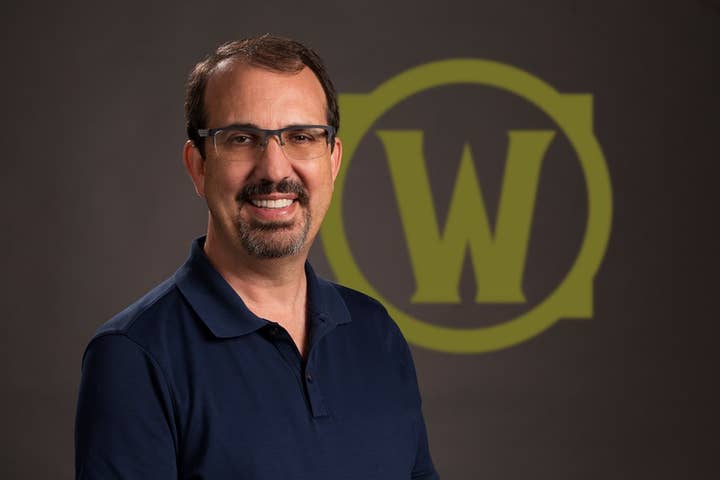
While perhaps no expansion has had quite the sweeping impact that Shadowlands has with its leveling adjustments, all eight have added new areas, characters, stories, gameplay mechanics, and often even classes or races on top of everything that's existed before in the already-massive world of Azeroth. I ask Hight and Day if they ever find that new expansions end up encumbered by what has existed before, or if the game's long live history ever makes it challenging to change or innovate.
Hight says that to Blizzard, each expansion is equivalent to a major game release and the team isn't afraid to scrap features from previous expansions to keep the game from having far too much weight and complexity. He isn't worried about being limited in what they can do by having to build on what's come before; rather, he thinks it is beneficial to have a "heritage of content."
"We look at every expansion as an opportunity to look at a lot of these base elements of World of Warcraft, like the world or our classes, and build upon those"
Morgan Day
"I think the core gameplay for World of Warcraft is really timeless, you know," he continues. "A lot of games have come out since then that are derivations of WoW. And I think what's allowed it to exist for so long. It's just fun gameplay, regardless of when it originally came out, but with every expansion, we are innovating, we're adapting some of the systems that are there. We have gone back and forth on what the reward system is, what our class system is, through various expansions.
"It is funny, sometimes when we set something in one of the current expansions back in some of the old areas of the world, because we want people to appreciate how big Azeroth is, we will go to some of those areas like 'Ooh, you know, that art was created a long time ago.' And start doing a little touch up here and there. So maybe we'll have the whole game completely refreshed someday."
Day adds that Blizzard can also find ways to implement new systems that don't up-end the existing ones, referencing the new Covenants coming in Shadowlands as being like adding a sub-class system without having to make dramatic, fundamental shifts to how classes work on their own.
"We look at every expansion as an opportunity to look at a lot of these base elements of World of Warcraft, like the world or our classes, and build upon those and expand them in a way that makes the world feel even more exciting and new for people to check out."
Speaking of major changes, another welcome one coming with Shadowlands encompasses a number of improvements to character customization, adding more skin tone, face, and hair options especially for the human and elf races -- and specifically adding more options for BIPOC individuals to create characters that look like them.
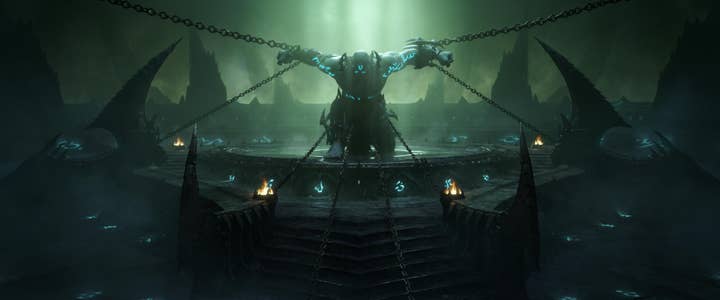
In this and other respects (such as the inclusion of an explicitly transgender character for the first time, and dropping the fee for players to change their character gender), World of Warcraft has been making some small progressive strides lately. Hight says that elements like the better customization options are things he thinks Blizzard has had on the mind for a while, but "overthought" by worrying they would need to find equivalent options for every other race in the game, including the bovine tauren. Ultimately, he says, they decided it was fine not to anthropomorphize some of the races too much and to make the changes anyway.
I ask Hight if, given those moves, the World of Warcraft team ever considers changing older content that has been criticized along similar lines -- for instance, the racial stereotypes perpetuated by the Tauren and Trolls.
"Times have changed; people's outlook has changed. I think that we're more progressive, and so the content moving forward is a reflection of that"
John Hight
"It's 16 years later," Hight says. "Times have changed; people's outlook has changed. I think that we're more progressive, and so the content moving forward is a reflection of that. We haven't tried to go back and rewrite the history of WoW. If something pops up that at the time seemed innocuous, and it's brought to our attention, but really isn't cool, we have gone back and we have changed a couple of things. But we try to be careful about that. People have memories of the way the game was, and we try to preserve that. But it's usually on a per-instance basis. We'll evaluate it and say, 'Hey, does this sound racist? Does this sound sexist?'
"The nice thing is that it's always been a teen-rated game. We haven't tried to put things in there that folks might find objectionable, so in those instances where it might have occurred, it was probably pretty innocent and also fairly easy for us to fix."
While Shadowlands marks a major content update for World of Warcraft, some things never change. The game is still running on a monthly paid subscription model, as it has from the start, despite a number of MMORPGs launching since that have experimented with other models including premium, free-to-play, and per-expansion payments.
"I wouldn't be surprised if you don't see more games heading towards a subscription service"
John Hight
Hight says that he believes this experimentation came because so many MMORPGs launched during the rise of free-to-play games, so companies wanted to test new revenue models. But he thinks that may be about to change, and already is outside of the MMO space.
"I wouldn't be surprised if you don't see more games heading towards a subscription service," he says. "Things like Battle Pass are kind of a hybrid form of a subscription. And look at streaming services now, Netflix and Amazon Prime, Disney Plus -- they're all moving to a subscription model. So I think we're ready to welcome the gaming industry to this innovative, new-angled way of monetizing games."
That said, Blizzard did recently make one major change to its subscription offering: last year it added World of Warcraft: Classic to that subscription without adding an extra charge.
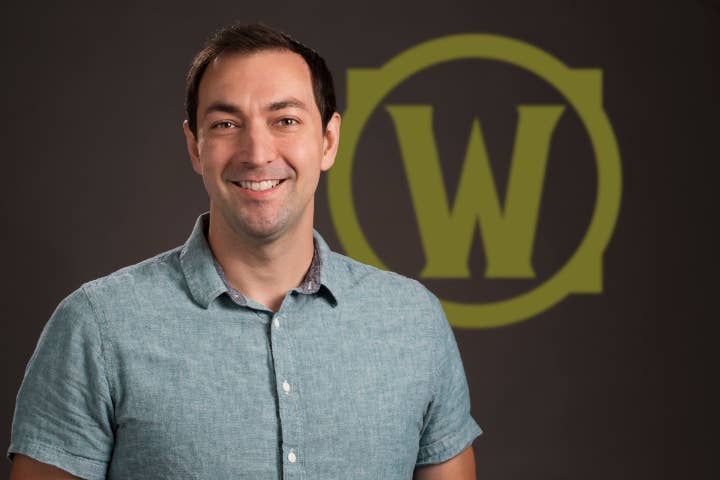
Hight says that while Classic was far more popular than anyone at Blizzard expected, they also have found that one version of World of Warcraft is not cannibalizing the other -- rather, there's not much of overlap at all between people swapping between the two, and both communities are healthy enough he feels comfortable releasing major content updates (such as upcoming raids) in both games around the same time.
It's also not something that's putting a strain on the World of Warcraft team to support. Though both games share the same server technology, each game is now run by a separate team, and Hight says Blizzard is currently hiring more developers in an effort to better smooth gaps between content releases and have more consistent launches.
"I don't know if more frequent content updates is going to be the exact answer"
John Hight
This is similar in tone to what was heard on Activision-Blizzard's Q3 earnings call, when company executives said they wanted to increase investment on a handful of major IPs including World of Warcraft, with an intent to build them up in a similar fashion to how Call of Duty has been elevated in the past year.
On the call, it was also mentioned that World of Warcraft wanted to deliver "more frequent major content launches across both the modern game and Classic in the years ahead."
Hight pushes back slightly on that phrasing.
"I don't know if more frequent content updates is going to be the exact answer," he says. "I think it's mostly being able to deliver content and quality content in a predictable fashion when players are ready for it; we just want to be able to have that ability."
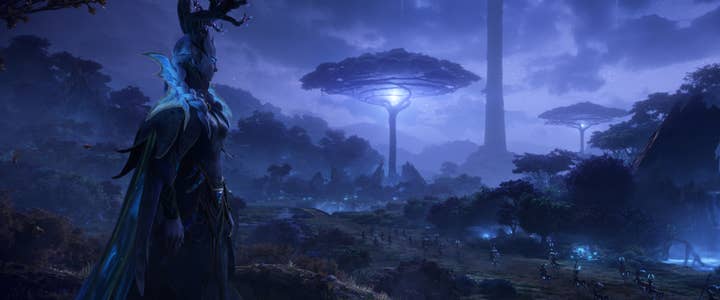
But he does want to emphasize the support World of Warcraft has received from the executive team. Following our interview, Hight followed up via email with an interest in mentioning that the delay of World of Warcraft: Shadowlands, while not to be taken lightly, was something that Activision-Blizzard leadership ultimately had their back on.
"Throughout our discussions, what really helped clarify this decision was the universal support that we received from our executive team including J. Allen Brack, Daniel Alegre, and Bobby Kotick," he wrote. "Commit to quality will always be Blizzard's mandate, and we couldn't be more proud of how Shadowlands has turned out."
"I think that World Warcraft can be just like that: it's a virtual theme park. Why should it ever end?"
John Hight
With eight expansions over 16 years, the biggest team the game's ever had working on Shadowlands, and the additional support of Classic, there seems to be no end in sight for Blizzard's popular MMORPG. Day and Hight say they think the game has endured as long as it has thanks to its inherent collaborative and cooperative play, its ability to cater to a wide variety of playstyles and interests, and the passion of the team behind it.
I ask them if there's a hypothetical scenario where the team would look at World of Warcraft and decide it was time to move on -- either to end the game or do a sequel ala RuneScape 2 and 3.
"If you look at classic WoW versus the more modern WoW and Shadowlands, they look very different," Days says. "I feel that part of the beauty of World of Warcraft is the ability to evolve and constantly change and improve the game."
And Hight concludes, "When I was a kid, my folks took me to this theme park. And this theme park was in California, we walked through the gates of this place, and I'm like, 'Oh, my gosh, what an incredible place.' And they took me on Pirates of the Caribbean and went on the Haunted Mansion. And it was such a wonderful place to go.
"And I think that World Warcraft can be just like that: it's a virtual theme park. Why should it ever end? We're going to continue to create areas and rides, if you would, for people to experience. I look forward to the day when my granddaughter can load up a character in WoW and show me what a terrible tank I am."
